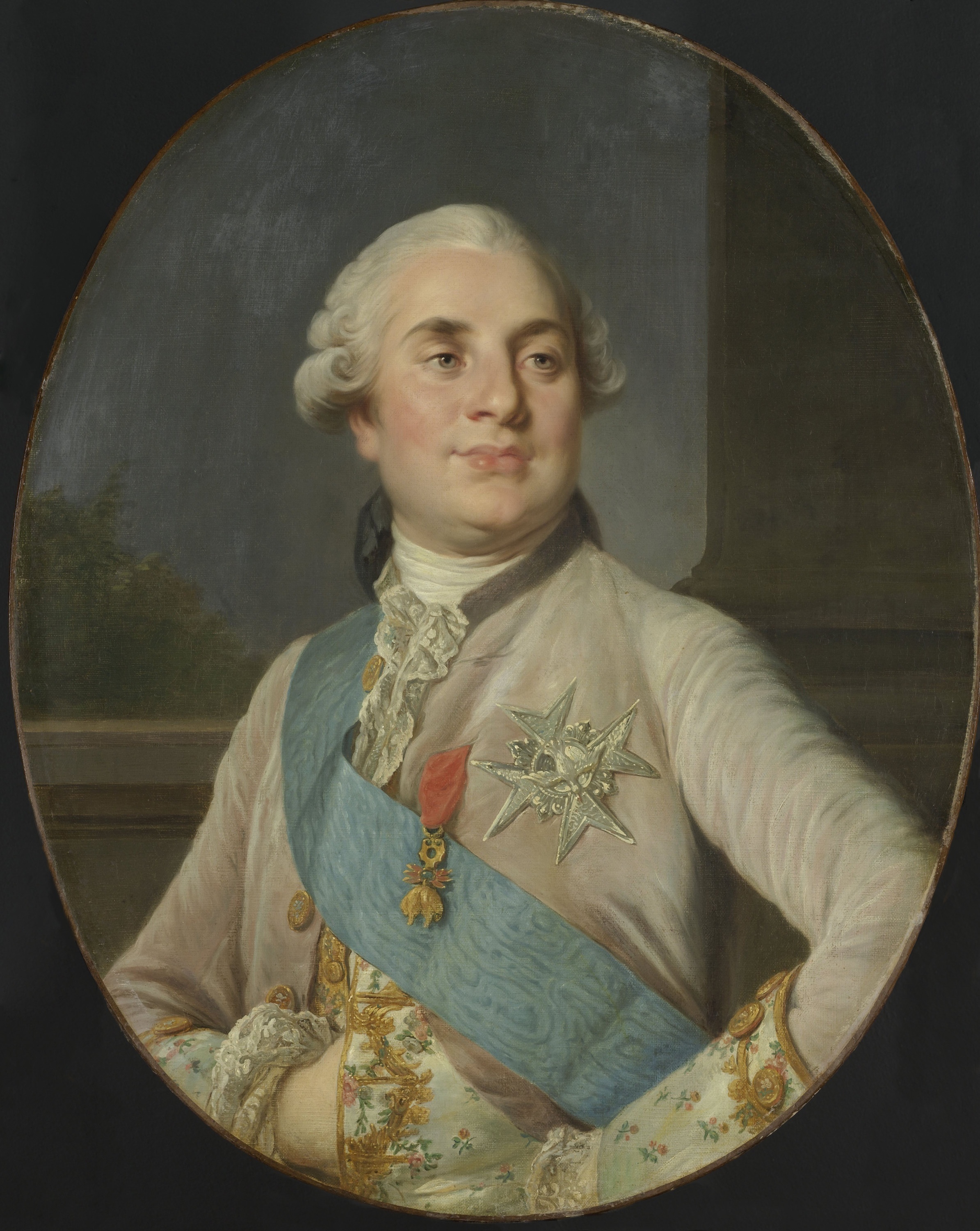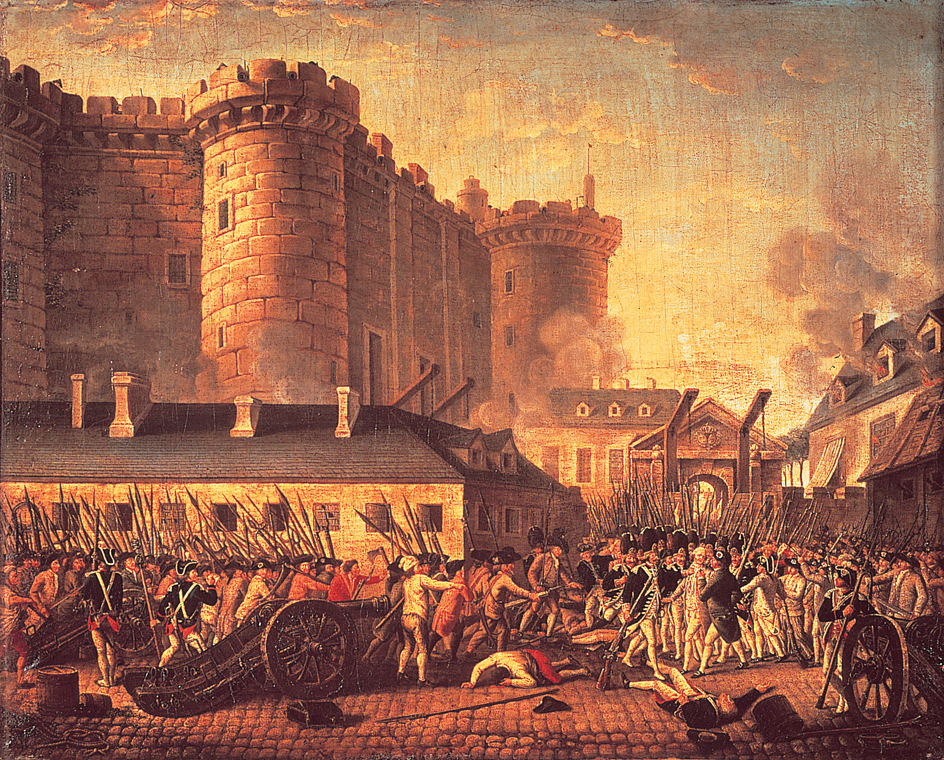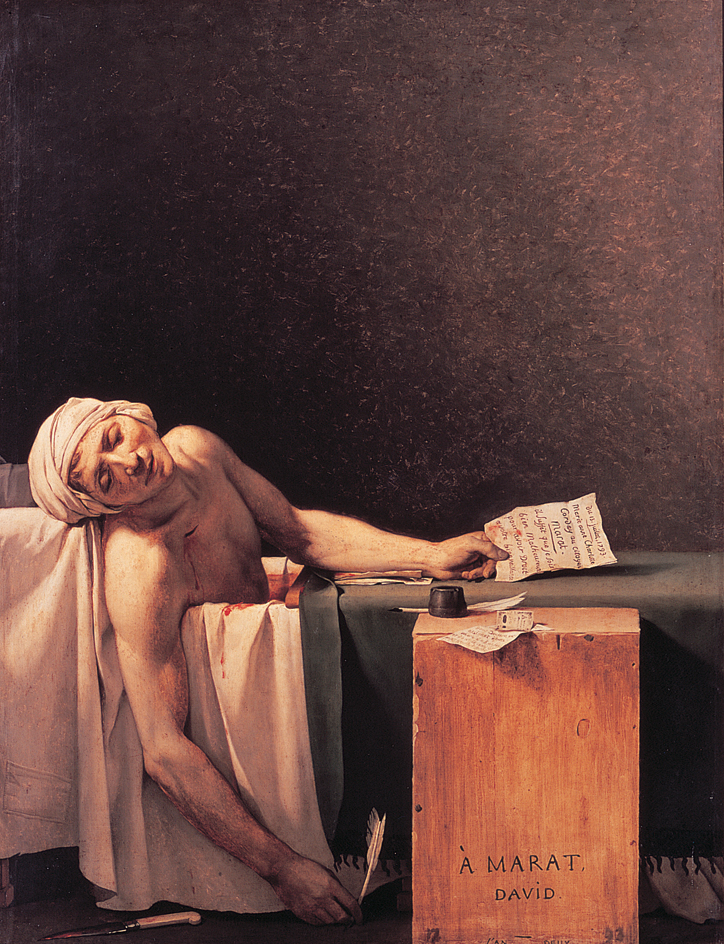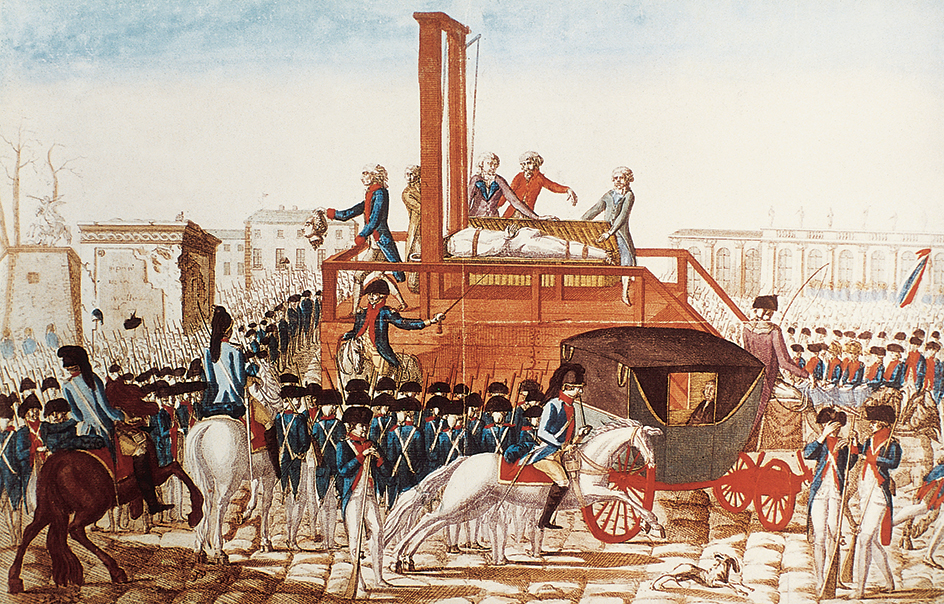French Revolution brought about great changes in the society and government of France. The revolution, which lasted from 1789 to 1799, also had far-reaching effects on the rest of Europe. It introduced democratic ideals to France but did not make the nation a democracy. However, it ended supreme rule by French kings and strengthened the middle class. After the revolution began, no European kings, nobles, or other privileged groups could ever again take their powers for granted or ignore the ideals of liberty and equality.

The revolution began with a government financial crisis but quickly became a movement of reform and violent change. In one of the early events, a crowd in Paris captured the Bastille, a royal fortress and hated symbol of oppression. A series of elected legislatures then took control of the government. King Louis XVI was executed. Thousands of others, including his wife, Marie Antoinette, met the same fate in a period called the Reign of Terror. The revolution ended when Napoleon Bonaparte, a French general, took over the government.
Background.
Various social, political, and economic conditions led to the French Revolution. These conditions included dissatisfaction among the lower and middle classes, interest in new ideas about government, and financial problems caused by the costs of wars.
Legal divisions among social groups that had existed for hundreds of years created much discontent. According to law, French society consisted of three groups called estates. Members of the clergy made up the first estate, nobles the second, and the rest of the people the third. The peasants formed the largest group in the third estate. Many of them earned so little that they could barely feed their families. The third estate also included the working people of the cities and a large and prosperous middle class made up chiefly of government officials, lawyers, and merchants.
The third estate resented certain advantages of the first two estates. The clergy and nobles did not have to pay most taxes. The third estate, especially the peasants, had to provide almost all the country’s tax revenue. Many members of the middle class also were troubled by their social status. They were among the most important people in French society but were not recognized as such because they belonged to the third estate.
The new ideas about government challenged France’s absolute monarchy. Under this system, the king had almost unlimited authority. He governed by divine right–that is, the monarch’s right to rule was thought to come from God. There were some checks on the king, but these came mainly from the parlements (high courts). During the 1700’s, French writers called philosophes and philosophers from other countries raised new ideas about freedom. Some of these thinkers, including Jean-Jacques Rousseau, suggested that the right to govern came from the people.
The financial crisis developed because France had gone deeply into debt to finance fighting in the Seven Years’ War (1756-1763) and the Revolutionary War in America (1775-1783). By 1788, the government was almost bankrupt. The Parlement of Paris insisted that King Louis XVI could borrow more money or raise taxes only by calling a meeting of the Estates-General. This body was made up of representatives of the three estates, and had last met in 1614. Unwillingly, the king called the meeting.
The revolution begins.
The Estates-General opened on May 5, 1789, at Versailles, near Paris. Most members of the first two estates wanted each of the three estates to take up matters and vote on them separately by estate. The third estate had as many representatives as the other two estates combined. It insisted that all the estates be merged into one national assembly and that each representative have one vote. The third estate also wanted the Estates-General to write a constitution.
Louis XVI and most delegates of the first two estates refused the demands of the third estate. In June 1789, the representatives of the third estate declared themselves the National Assembly of France. They gathered at a tennis court and pledged not to disband until they had written a constitution. This vow became known as the Oath of the Tennis Court. The king allowed the three estates to join together as the National Assembly. But he began to gather troops to break up the Assembly.
Meanwhile, the people of France also took action. On July 14, 1789, a huge crowd of Parisians rushed to the Bastille. They believed they would find arms and ammunition there for use in defending themselves against the king’s army. The people captured the Bastille and began to tear it down. At the same time, leaders in Paris formed a revolutionary city government. Massive peasant uprisings against feudal lords also broke out in the countryside. A few nobles decided to flee France, and many more followed in the next five years. These people were called émigrés because they emigrated. The uprisings in town and countryside saved the National Assembly from being disbanded by the king. 
The National Assembly.
In August 1789, the Assembly adopted the Decrees of August 4 and the Declaration of the Rights of Man and of the Citizen. The decrees abolished some feudal dues that the peasants owed their lords, the tax advantages of the clergy and nobles, and regional privileges. The declaration guaranteed the same basic rights to all citizens, including “liberty, property, security, and resistance to oppression” as well as representative government.
The Assembly later drafted a constitution that made France a limited monarchy with a one-house legislature. France was divided into 83 regions called departments, each with elected councils for local government. But the right to vote and hold public office was limited to citizens who paid a certain amount of taxes.
The Assembly seized the property of the Roman Catholic Church. The church lands amounted to about a tenth of the country’s land. Much of the church land was sold to rich peasants and members of the middle class. Money from the land sales was used to pay some of the nation’s huge debt. The Assembly then reorganized the Catholic Church in France, required the election of priests and bishops by the voters, and closed the Church’s monasteries and convents. Complete religious tolerance was extended to Protestants and Jews. The Assembly also reformed the court system by requiring the election of judges. By September 1791, the National Assembly believed that the revolution was over. It disbanded at the end of the month to make way for the newly elected Legislative Assembly.
The Legislative Assembly.
The new Assembly, made up mainly of representatives of the middle class, opened on Oct. 1, 1791. It soon faced several challenges. The government’s stability depended on cooperation between the king and the legislature. But Louis XVI remained opposed to the revolution. He asked other rulers for help in stopping it, and plotted with aristocrats and émigrés to overthrow the new government. In addition, public opinion became bitterly divided. The revolution’s religious policy angered many Catholics. Other people demanded stronger measures against opponents of the revolution.
The new government also faced a foreign threat. In April 1792, it went to war against Austria and Prussia. These nations wished to restore the king and émigrés to their positions. The foreign armies defeated French forces in the early fighting and invaded France. Louis XVI and his supporters clearly hoped that the invaders would win. As a result, angry revolutionaries in Paris and other areas demanded that the king be dethroned.
In August 1792, the people of Paris took custody of Louis XVI and his family and imprisoned them. Louis’s removal ended the constitutional monarchy. The Assembly then called for a National Convention to be chosen in an election open to nearly all French males age 21 or older, and for a new constitution.
Meanwhile, French armies suffered more military defeats. Parisians feared that the invading armies would soon reach the city. Parisians also feared an uprising by the large number of people in the city’s prisons. In the first week of September 1792, small numbers of Parisians took the law into their own hands and executed more than 1,000 prisoners. These executions, called the September Massacres, turned many people in France and Europe against the revolution. On September 20, French forces defeated a Prussian army in the Battle of Valmy. This victory, which prevented the Prussians from advancing on Paris, helped end the crisis.
The National Convention.
The king’s removal led to a new stage in the revolution. The first stage had been a liberal middle-class reform movement based on a constitutional monarchy. The second stage was organized around principles of democracy. The National Convention opened on Sept. 21, 1792, and declared France a republic. The republic’s official slogan was “Liberty, Equality, Fraternity.”
Louis XVI was placed on trial for betraying the country. The National Convention found him guilty of treason, and a slim majority voted for the death penalty. The king was beheaded on the guillotine on Jan. 21, 1793. The revolution gradually grew more radical–that is, more open to extreme and violent change. Radical leaders came into prominence. In the Convention, they were known as the Mountain because they sat on the high benches at the rear of the hall. Leaders of the Mountain were Maximilien Robespierre, Georges-Jacques Danton, and Jean-Paul Marat. Their opponents were known as the Gironde because several came from a department of that name. The majority of the deputies in the Convention, known as the Plain, sat between the two rival groups. The Mountain dominated a powerful political club called the Jacobin Club. 
Growing disputes between the Mountain and the Gironde led to a struggle for power, and the Mountain won. In June 1793, the Convention expelled and arrested the leading Girondists. In turn, the Girondists’ supporters rebelled against the Convention. Charlotte Corday, a Girondist sympathizer, assassinated Jean-Paul Marat in July 1793. In time, the Convention’s forces defeated the Girondists’ supporters. The Jacobin leaders created a new citizens’ army to fight rebellion in France and a war against other European nations. A military draft provided the troops, and rapid promotion of talented soldiers provided the leadership for this strong army.
Terror and equality.
The Jacobin government was dictatorial and democratic. It was dictatorial because it suspended civil rights and political freedom in the emergency. The Convention’s Committee of Public Safety took over actual rule of France, controlling local governments, the armed forces, and other institutions.
The committee governed during the most terrible period of the revolution. Its leaders included Robespierre, Lazare Carnot, and Bertrand Barère. The Convention declared a policy of terror against rebels, supporters of the king or the Gironde, and anyone else who publicly disagreed with official policy. Hundreds of thousands of suspects were jailed. Courts handed down thousands of death sentences in what was called the Reign of Terror. Paris grew accustomed to the rattle of two-wheeled carts called tumbrels carrying people to the guillotine. Victims included Marie Antoinette, widow of Louis XVI. 
The Jacobins, however, also followed democratic principles and extended the benefits of the revolution beyond the middle class. Many workers participated in political life for the first time. The Convention authorized free primary education, public assistance for the poor, price controls to protect consumers from inflation, and taxes based on income. It also called for the abolition of slavery in France’s colonies. But most of these reforms were never fully carried out because of later changes in the government.
The revolution ends.
In time, the radicals began to struggle for power among themselves. Robespierre succeeded in having Danton and other former leaders executed. Many people in France wished to end the Reign of Terror, the Jacobin dictatorship, and the democratic revolution. Robespierre’s enemies in the Convention finally attacked him as a tyrant on July 27 (9 Thermidor by the French calendar), 1794. He was executed the next day. The Reign of Terror ended after Robespierre’s death. Conservatives gained control of the Convention and drove the Jacobins from power. Some of the democratic reforms of the past two years were abolished in what became known as the Thermidorian Reaction. 
The Convention replaced the democratic constitution it had adopted in 1793 with a new one in 1795. The government formed under this new constitution was called the Directory, referring to the five-man executive directory that ruled along with a two-house legislature. France was still a republic, but once again only citizens who paid a certain amount of taxes could vote.
Meanwhile, France was winning victories on the battlefield. French armies had pushed back the invaders and crossed into Belgium, Germany, and Italy.
The Directory began meeting in October 1795. But it was troubled by war, economic problems, and opposition from supporters of monarchy and former Jacobins. In October 1799, a number of political leaders plotted to overthrow the Directory. They needed military support and turned to Napoleon Bonaparte, a French general who had become a hero in a military campaign in Italy in 1796 and 1797. Bonaparte seized control of the government on Nov. 9 (18 Brumaire in the revolutionary calendar), 1799, ending the revolution.
The French Revolution brought France into opposition with much of Europe. The monarchs who ruled the other nations feared the spread of democratic ideals. The revolution left the French people in extreme disagreement about the best form of government for their country. By 1799, most were probably weary of political conflict altogether. But the revolution created the long-lasting foundations for a unified state, a strong central government, and a free society dominated by the middle class and the landowners.
